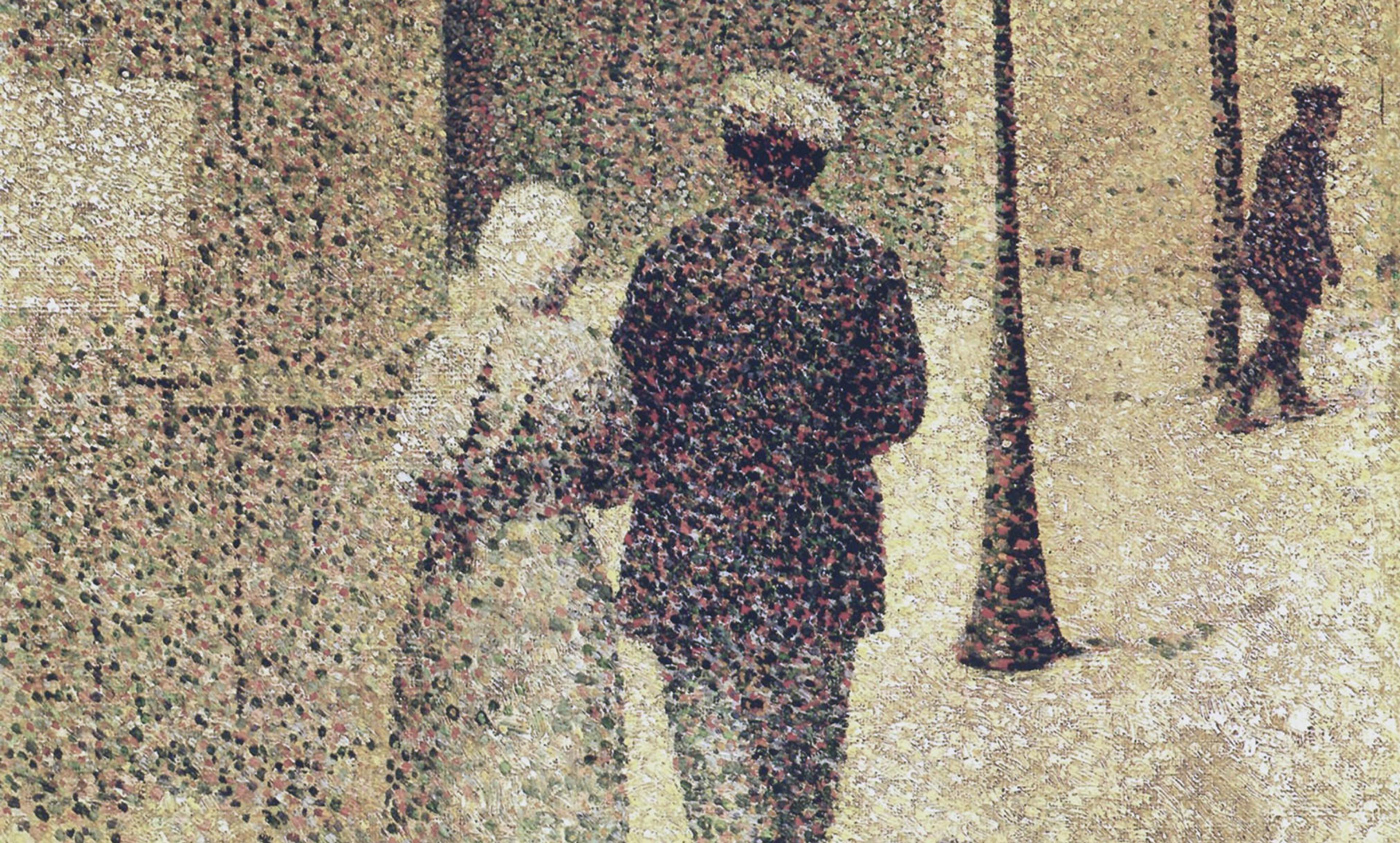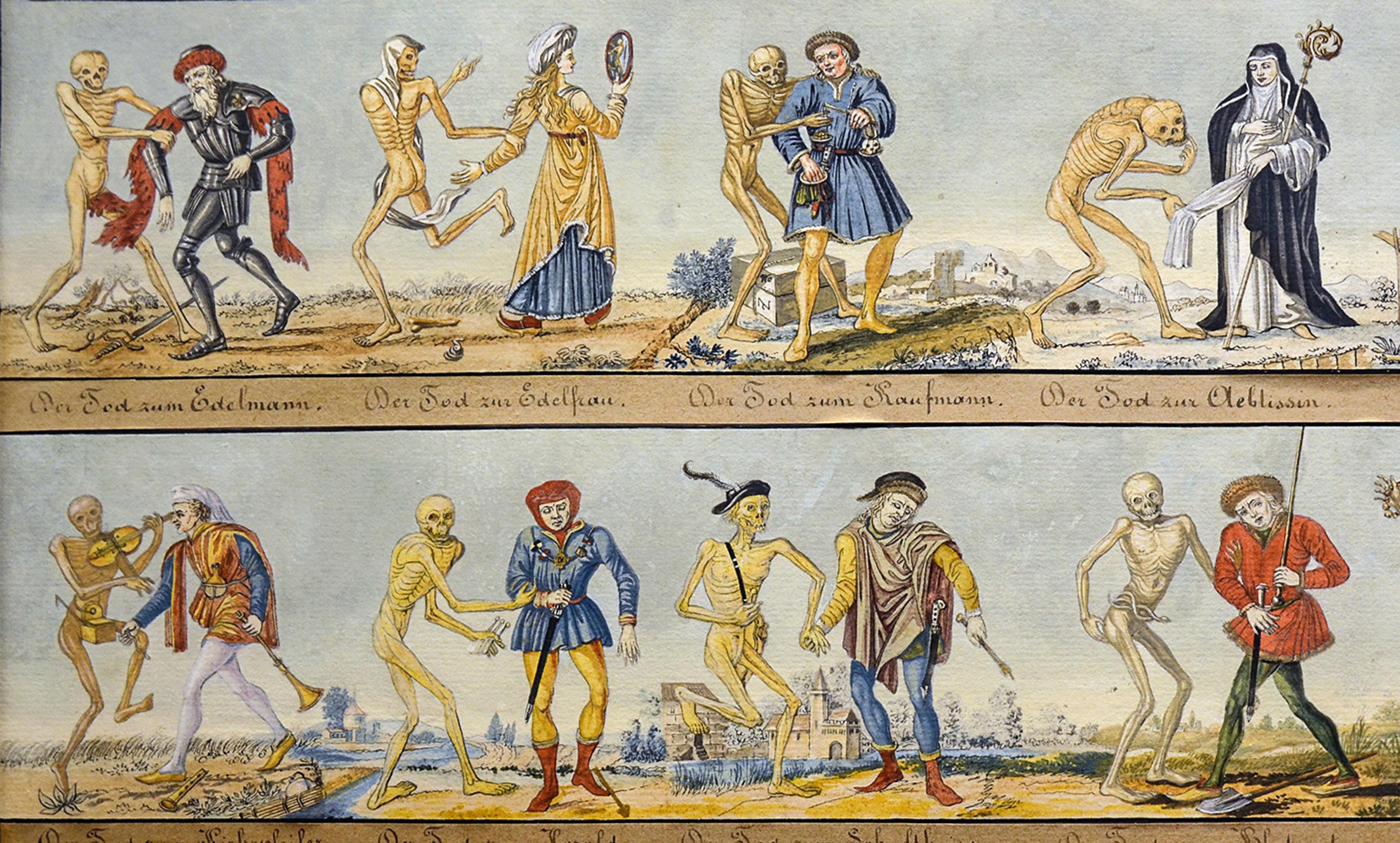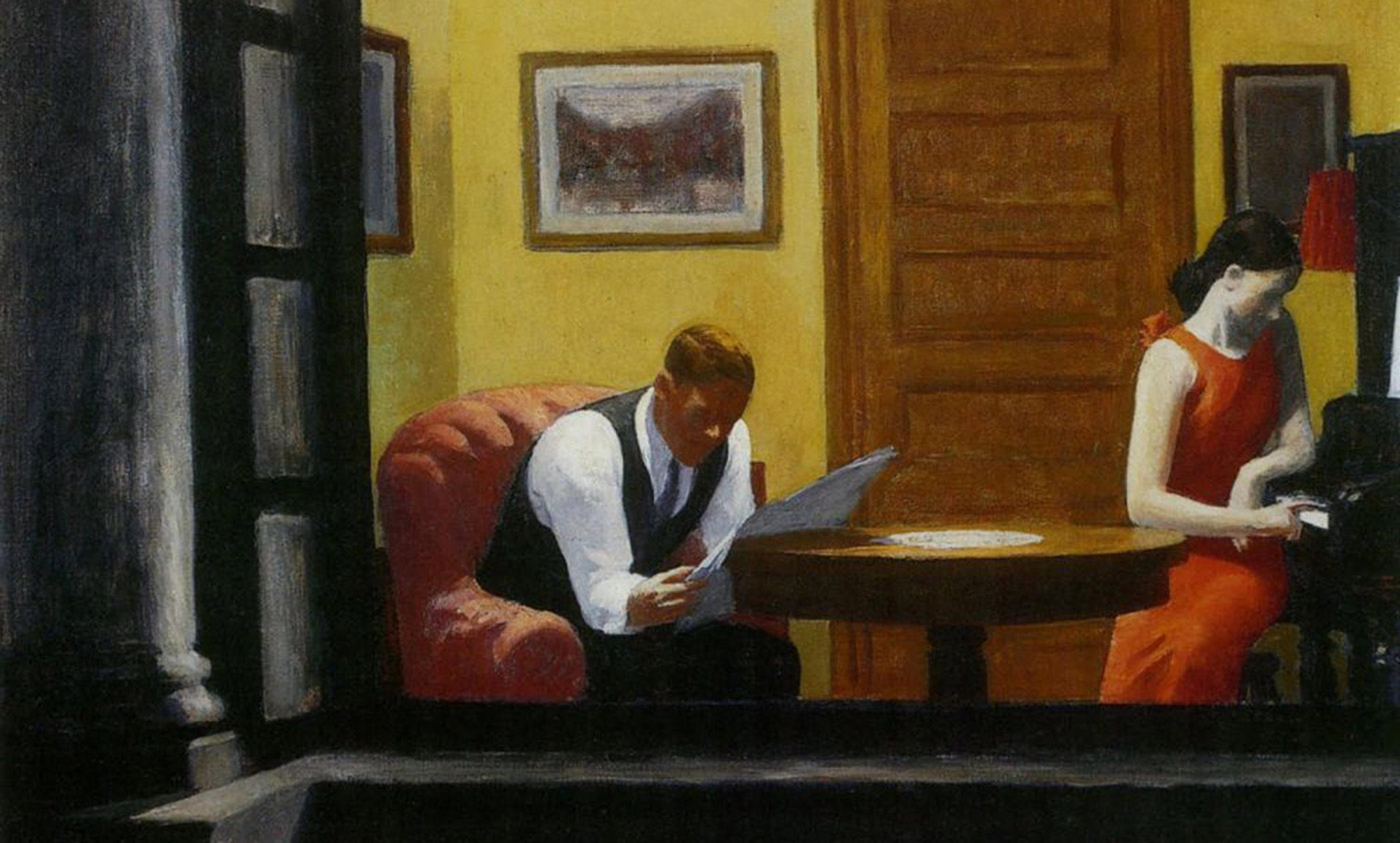
The Couple in the Street (1887) by Charles Angrand. Courtesy Musée d’Orsay/Wikipedia
Right now, in millions of bedrooms across the land, people are sighing for love. Love is important, and many of us wait for it, travel for it, and build our lives around it. But what is love? (Baby don’t hurt me.) In this article, I will articulate how I have come to understand what love is, with the unexpected help of Bayesian probability theory.
Take two types of love: conditional and unconditional. What does it mean to love someone conditionally or unconditionally? Is it possible to love unconditionally, and if so, is it rational to do so? I will try to make sense of the confusing and complex emotion that we call love by creating a parallel between conditional/unconditional love and conditional/unconditional degrees of belief. It is not that I take love to be a belief – rather, I take it that by looking at conditional/unconditional belief we can see a potentially helpful and illuminating analogy to conditional/unconditional love.
Degrees of belief are called credences. These credences can be given numerical values between 0 and 1 (where 1 is being completely certain), to demonstrate how strong that degree of belief is. Importantly, these values are not forever fixed, and can change when given reason to do so. For example, I believe that this article will be a hit! I am pretty confident of this, given the article’s awesome topic and the awesomeness of Aeon’s readership, and so my degree of belief might be somewhere around the 0.8 mark. Though I cannot think of any reason why it would not be a hit, imagine I receive some information to suggest otherwise. Perhaps Aeon’s editors tell me that they will publish it with the warning sign ‘Read this article and get seven years of bad luck.’ On the basis of that new information, I revise my degree of belief in the success of the article from 0.8 down to something like 0.4, as I assume that some people are superstitious and would rather not risk seven years of bad luck to learn what I think about love. Fair enough.
But how do you rationally alter your credence, and figure out how strong it should be, given the information that you have? Cue Bayesian probability theory to calculate conditional credences. A credence is conditional upon information when it is evaluated with regard to that information, such that the strength of the belief is sensitive to that information and is updated on the basis of it. Now this sounds totally feasible – of course I should change my degree of belief in light of new evidence! But what if my credence is completely irresponsive to such evidence? What if it is forcibly unmovable? This is what it is like to have credence 1, in other words, a belief of certainty, which could not be any stronger and cannot be updated. It cannot be updated in either direction – it cannot get stronger because it is already at maximum strength, and it cannot get weaker on the basis of evidence because it was not built on the basis of evidence in the first place. Regardless of any information that might ordinarily sway someone’s attitudes, when your credence in something is a full 1, it does not waver. No matter how strong the opposing information is, it will not detract you from credence 1, so the Bayesian says. As such, it seems that credence 1 cannot be changed. Or can it?
What I have described so far is rational changes to credences, as it is rational to change one’s degree of belief in something on the basis of relevant information. But we can also change our degree of belief in an irrational way, perhaps just randomly! To act rationally is to act according to reason, and to act without reason is to act irrationally. So what the Bayesian theory shows us is that credence 1 cannot be rationally changed, but perhaps it could change irrationally. What I will now show is how this can map on to rational conditional love and irrational unconditional love, where loving unconditionally is like having credence 1.
What does it mean to love conditionally? Well, ask yourself, why do you love someone? Maybe she is kind, funny or clever – you have your reasons! Maybe he has many lovable aspects, and you love him because of the person that he is and the way he makes you feel. So conditional love is love that is conditional on such reasons, and will be responsive to them changing. This would be parallel with having a credence somewhere between 0 and 1 (but not at either extreme). You could love her a little, at 0.3, or loads, at 0.9, for example. Maybe you start at 0.3 and as you get to know his positive qualities (thus gaining information) your love grows to 0.9. Maybe she does something bad that hurts you (also providing more information) and as a result the love levels decrease. When your strength of feeling is sensitive to information about how things are, a philosopher would call it rational, as it develops in accordance with that information. Such is loving for a reason: with more reason comes more love, and when the reason goes, the love goes. This type of conditional love is an analogy to rational credences between 0 and 1 (not including the extremes), which change on the basis of evidence.
Alternatively, unconditional love is love that will not change according to any information, as it was not built on the basis of information in the first place. This is love without reason, where no evidence or information can alter it. Why do you love someone? For no reason! Or, as Boyzone and the Osmonds would have it: ‘Don’t love me for fun, girl/Let me be the one, girl/Love me for a reason/Let the reason be love.’
When there is no answer to the ‘why’ question other than love itself, when your love is not based on anything else, when it does not change according to anything, this is unconditional love. This type of love has an untouchable and irrational mind of its own. As with credence 1, it can change only irrationally – it does not abide by any Bayesian law and so cannot be updated. Love that is as strong as credence 1 cannot move from 1 due to any reason, for it is unconditional and thus irresponsive to any conditions. You fall in and out of unconditional love at the mercy of love itself. When love hits you in the face, unexpectedly, based on nothing, then it can persist through changes and will not be shaken (nor stirred) by opposing reason, evidence or information. This is loving in spite of everything, rather than loving because of something, and so appears unaltered by reason. As William Shakespeare put it: ‘Love is not love which alters when it alteration finds …’ But this does not make the love stable. It is simply out of your control, and can literally go away for no reason! (Indeed, for no reason is the only way it can go!)
I do not mean to suggest that one type of love is more worthy than the other – after all, we value processes that are reasonable, yet we also aim for the extreme. The evidence-based approach of conditional love is at least more controllable, and as the analogy to Bayesian theory goes, is more rational. But can this reasonable process of conditional love grow rationally to the extreme of unconditional love? Can it develop through reason to reach the equivalent of credence 1? If not, then in loving ‘because’ of certain reasons you limit yourself to never achieving the dizzying height of unconditional love – the love that is as complete and certain and unmovable as credence 1.
As an addendum, for those of you who are mathematicians, here are the proofs:
The formula for updating credences by conditionalisation is:
Crupdated(p)=Crinitial(p|e)
Cr is credence.
p is a proposition or event, where Cr(p) is the probability value of p between 0 and 1.
e is a proposition or event that counts as evidence, where Cr(e) is the probability value of e between 0 and 1.
The subscript ‘updated’ denotes the new credence, once e has been taken into account.
The subscript ‘initial’ denotes the old credence, before e has been taken into account.
The line | should be read as simply meaning ‘conditional upon’.
So how do we calculate Crinitial(p|e)? Like this:
Cr(p|e) = Cr(e∩p)/Cr(e)
No matter how strong our credence in e is, it will not detract from our credence 1 in p. This can be demonstrated by plugging in Crinitial(p)=1, to show that Crupdated(p) will only then equal 1.
When Cr(p)=1, it is a theorem that Cr(e)=Cr(e∩p)
This theorem follows from the 3rd probability axiom of ‘additivity’
e is equivalent to (e∩p)∪(e∩¬p)
So Cr(e)=Cr(e∩p)+Cr(e∩¬p)
So it will suffice to show that Cr(e∩¬p)=0
Through another application of the additivity axiom, we can derive:
Cr(¬p)=Cr(e∩¬p)+Cr(¬e∩¬p)
Since we have stipulated that Cr(p)=1, then it must be the case that Cr(¬p)=0
So Cr(e∩¬p) and Cr(¬e∩¬p) sum to zero, and as they are non-negative, must both equal zero
This leaves us with Cr(e)=Cr(e∩p)+Cr(e∩¬p) where Cr(e∩¬p)=0
Thus, we have proved Cr(e)=Cr(e∩p)
Utilising this result, our formula for calculating Cr(p|e) cancels down to 1:
From Cr(e∩p)/Cr(e)
To Cr(e)/Cr(e)
To 1 (as anything divided by itself equals 1)
Since Crupdated(p)=Crinitial(p|e), where we have just shown that Crinitial(p|e)=1, then it will always be the case that Crupdated(p)=1 when Crinitial(p)=1, for any e where Cr(e)≠0.
So, credence 1 is rationally unmovable, in a similar way to having unconditional love. And who said that there is no romance in maths?
This Idea is part of a project that has received funding from the European Research Council (ERC) under the European Union’s Horizon 2020 research and innovation programme, under grant agreement number 679586.





